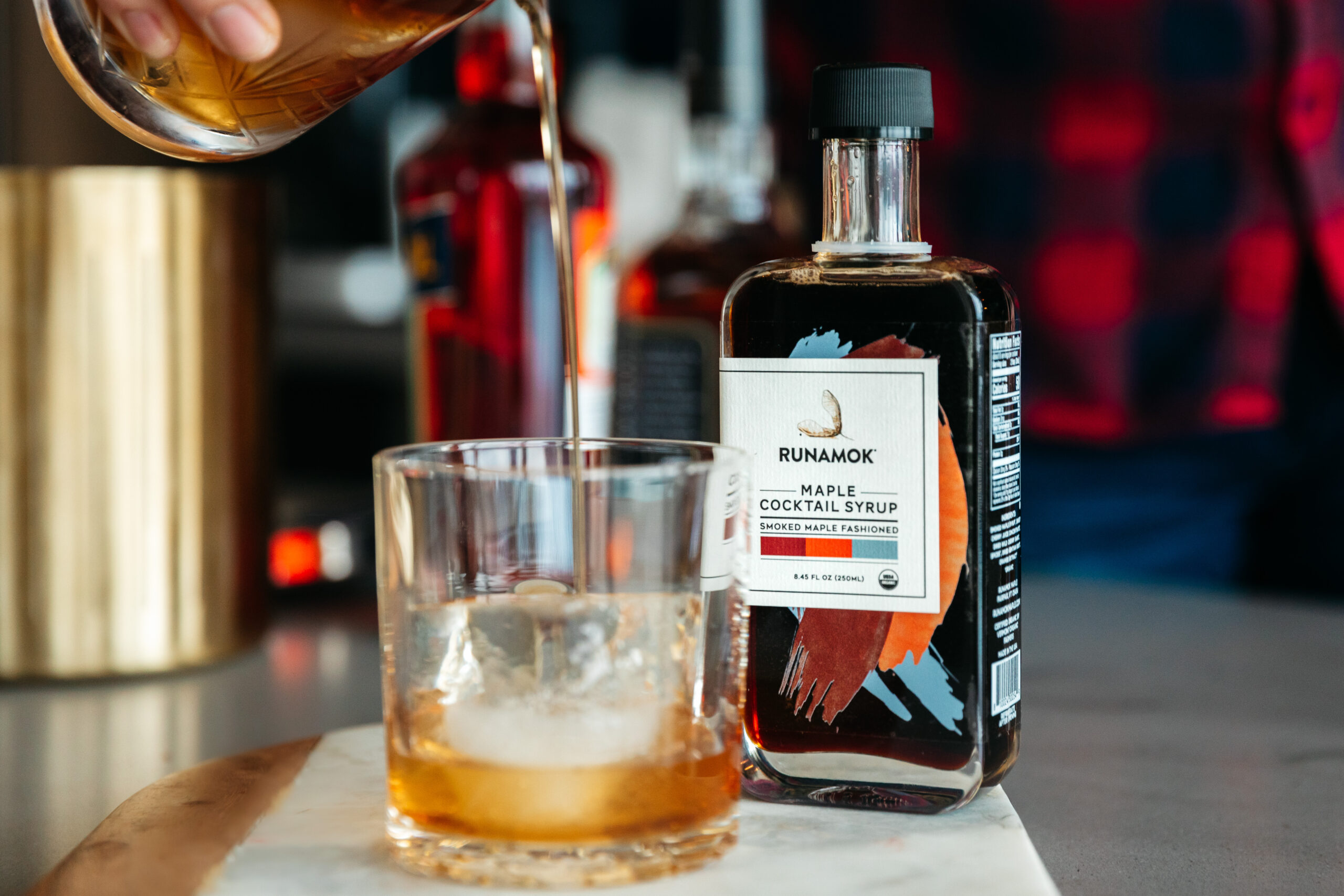Balance is the most important factor in creating an excellent aromatic cocktail. Balance in cocktails started very basically with the Old Fashioned and has evolved through time to become quite complicated indeed. The Old Fashioned was originally just called “the cocktail” as it was the first time in recorded bar recipes where three ingredients were combined to create a stand-alone alcoholic drink. Bartenders of the day eventually made more three ingredient beverages following the balance of “the cocktail”- think Daiquiri, Gimlet cocktail, Manhattan- forcing patrons wanting whisky, sugar, and bitters to order “the Old Fashioned Cocktail”.
Aromatic cocktails nearly never include citrus juice, often include far less sugar, and a bitter ingredient. They should be stirred smoothly in a glass, as they need to be emulsified and chilled, but not aerated. All should be strained over fresh ice in a rocks glass or up in a cocktail glass. Aromatics are largely just spirits and therefore are more fragile and delicate. There are 4 Aromatic ratios to learn and variate off of. The aromatic ratios are anchored by spirits, sweet, and bitter.
Let’s begin again with the Old Fashioned: traditionally 2 parts American Bourbon Whiskey, 1 sugar cube or 1 barspoon of simple syrup, and 2+ shakes of Aromatic bitters. The Old Fashioned was commonly garnished with both an expressed lemon and orange peel. Whisk(e)y variety can change or be subbed for rum or añejo tequila, original or Runamok Infused Maple Syrups for sugar, bitter flavors can change, but the particular balance of 2:1:2+ should not.
Second, the Manhattan is traditionally 1 part rye whisky, 1 part fresh sweet vermouth and 2+ shakes of aromatic bitters. The Manhattan is served up in a cocktail glass, garnished with an expressed orange peel, or a Luxardo cherry whose rich flavor compliments the sweet vermouth. For a Maple Manhattan, substitute the Sweet Vermouth for ¾ part Runamok Bourbon or Whiskey Barrel Aged Maple Syrup syrup (2:1), and add 2 more shakes of bitters. Barrel aged maple syrup adds sweetness of course, but also a distinct caramel, oak nuttiness to the flavor.
Third, a Martini. Traditionally one stirs together (why Fleming?!) 2 oz gin, 1 oz fresh French dry vermouth, and 2 dashes of orange bitters. The Martini is strained into a cocktail glass and garnished with an expressed lemon. Always use fresh vermouths, or ones stored in the fridge. Since they are largely wine, they will go bad after a few days if left out.
The final aromatic ratio variant is the Negroni with a standard ratio of 1:1:1- gin, sweet vermouth, and bitter liqueur. In the Negroni all ingredients are spirits, but all three fulfill two categories in the spirit, sweet, bitter foundations of an aromatic ratio. Because everyone on team Negroni works two jobs, it is unnecessary to add additional sugars, citrus, or bitters. The Negroni is always stirred gently, strained into a rocks glass filled with ice, and garnished with an expressed orange peel. The bitter liqueur used is often a red bitter like Campari or Aperol, so the negroni is bright red and recognizable on a bar top.
Remember the most important part of crafting an excellent aromatic cocktail is balance. Try these 4 classics to calibrate your palate, and them experiment to find your favorite ingredients in each!

